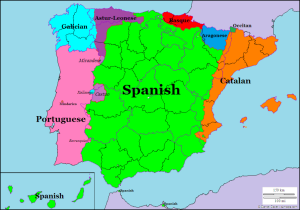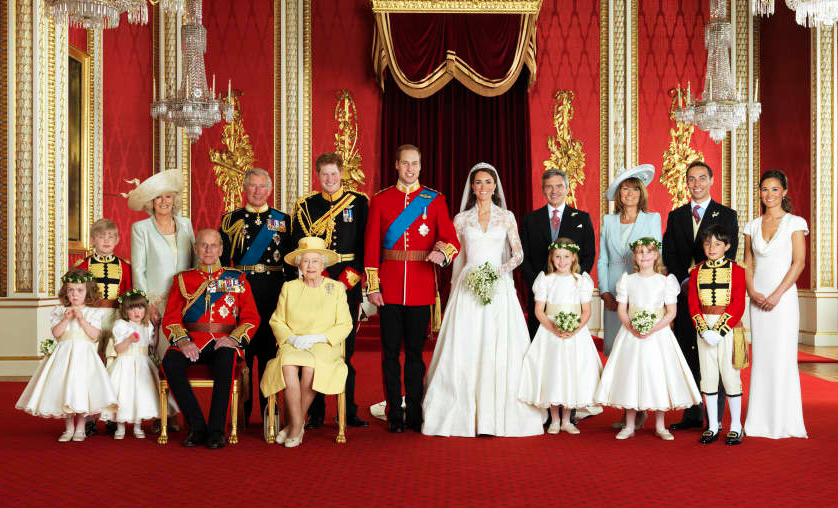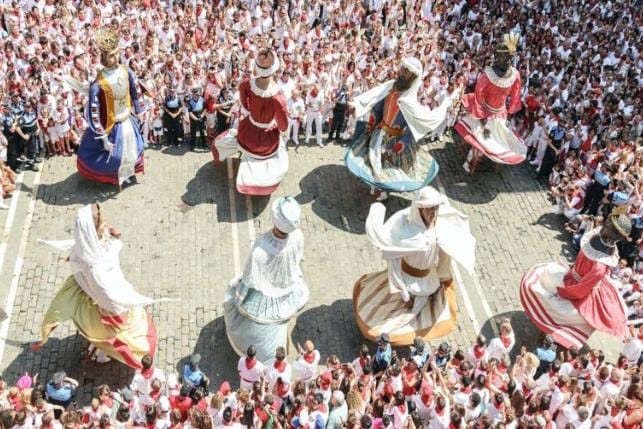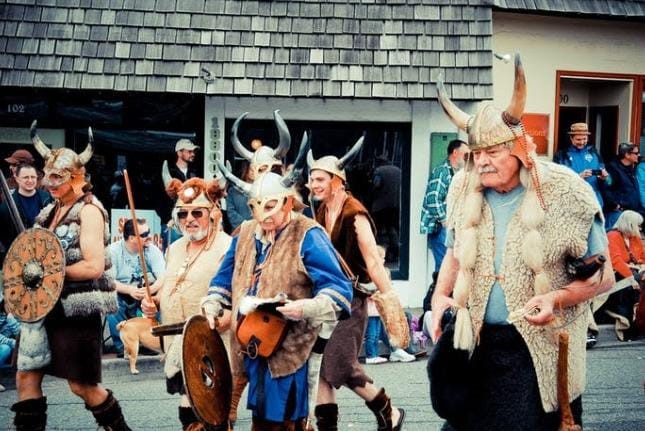History
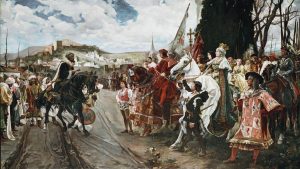
Spain has a rich and complex history that spans thousands of years. Its location at the crossroads of Europe, Africa, and the Mediterranean has made it a key player in world events. This history can be divided into several key periods, including prehistoric times, the Roman Empire, the Visigothic Kingdom, the Islamic period, the Reconquista, the Golden Age, and the modern era.
Prehistoric times in Spain date back to the Paleolithic era, with the earliest human remains found in the Atapuerca Mountains dating back to around 1.2 million years ago (Carbonell et al., 2008). Later, in the Bronze Age, the Iberians established a number of settlements along the eastern coast of Spain, and the Celts migrated to the north and northwest of the peninsula (Collis, 2003).
The Roman Empire conquered Spain in the 2nd century BCE, and it became an important part of the empire. The Romans established a number of cities, including Tarraco (modern-day Tarragona) and Corduba (modern-day Córdoba), and they introduced new technologies and ideas to the region. However, the Roman Empire eventually declined, and in the 5th century CE, the Visigoths invaded and established their own kingdom in Spain (Collins, 2004).
In 711 CE, the Islamic Moors invaded Spain and established their own civilization, which lasted for nearly 800 years. During this time, Spain became a center of learning and culture, with important cities such as Córdoba, Granada, and Toledo. However, the Christian kingdoms in the north eventually began a campaign to reconquer Spain, known as the Reconquista, which lasted for several centuries.
Location
Spain is a country located on the Iberian Peninsula in southwestern Europe. It is bordered by the Atlantic Ocean to the west and the Mediterranean Sea to the south and east. Spain also shares borders with Portugal to the west and France to the north.
The geographical coordinates of Spain are 40.4637° N, 3.7492° W, and it covers an area of approximately 505,990 square kilometers. The country has a diverse landscape that includes high mountains, rolling hills, fertile plains, and a long coastline with beaches, cliffs, and islands.
Spain is divided into 17 autonomous regions, each with its own capital and government. The largest cities in Spain are Madrid, Barcelona, Valencia, Seville, and Malaga. Madrid, the capital, is located in the center of the country and is the political and cultural hub of Spain.
Spain has a rich history and culture that is influenced by its location and diverse population. The country has been shaped by various civilizations, including the Romans, Moors, and Christians. Spain is also home to a variety of languages and dialects, including Spanish, Catalan, Basque, and Galician.
In summary, Spain is located in southwestern Europe on the Iberian Peninsula, bordered by the Atlantic Ocean and the Mediterranean Sea. The country has a diverse landscape, 17 autonomous regions, and a rich history and culture.
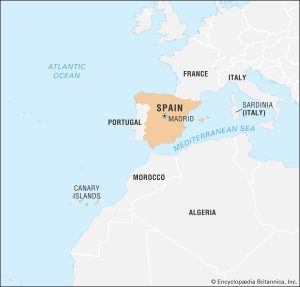
Climate
Spain has a Mediterranean climate, which is characterized by hot and dry summers and mild and rainy winters. The country’s location at the intersection of the Mediterranean Sea and the Atlantic Ocean, as well as its varied topography, contributes to its diverse climate patterns (Maseyk, 2021).
The southern regions of Spain, such as Andalusia, experience a hot and dry climate, with temperatures that can exceed 40°C in the summer months. In contrast, the northern regions, such as Galicia and Asturias, have a cooler and wetter climate due to the influence of the Atlantic Ocean (Jerez, 2019).
The central region of Spain, including Madrid, has a continental climate with hot summers and cold winters, and relatively low precipitation throughout the year. The Pyrenees mountain range in the north of Spain experiences a subarctic climate with long, cold winters and short summers (Cortés & López-Moreno, 2016).
Climate change is affecting Spain’s climate, leading to more frequent and severe heatwaves and droughts, and an increase in extreme weather events such as floods and wildfires (IPCC, 2018). The Spanish government has implemented measures to mitigate the effects of climate change, including the development of renewable energy sources and the promotion of sustainable transportation and urban planning (Ministerio para la Transición Ecológica y el Reto Demográfico, 2021).

Languages
One of the most striking features of Spain is its language, which is the official language of the country and is spoken by more than 460 million people globally. The Spanish language, commonly known as Castilian, has many regional variations that vary in terms of grammar, vocabulary, and pronunciation. In this paper, we will explore the languages of Spain, including their origin, development, and regional variations.
The Spanish Language
The Spanish language is the most widely spoken language in Spain, and it is also the official language of the country. It is a Romance language that belongs to the Indo-European language family. Spanish evolved from the Vulgar Latin spoken by the Roman conquerors who arrived in Spain in the 3rd century BC (Alvarez et al., 2017). As time passed, the language absorbed elements from other languages such as Arabic, Basque, and Catalan, which influenced the formation of different dialects in various regions of Spain.
The Spanish language is distinguished by its complex grammatical structure and unique vocabulary, which can be challenging for learners who are not familiar with the language. Spanish words are gendered, and adjectives must agree with the gender of the noun. The language also has several verb conjugations that vary depending on the tense, mood, and subject pronoun.
Regional Variations of Spanish
As mentioned earlier, the Spanish language has many regional variations that vary in terms of vocabulary, grammar, and pronunciation. The regional variations of Spanish are sometimes referred to as dialects or regional languages. Some of the most notable regional variations of Spanish include Catalan, Basque, Galician, and Valencian.
Catalan is a regional language spoken in Catalonia, Valencia, and the Balearic Islands. It is a Romance language that has been influenced by French and Spanish, and it has its unique vocabulary, grammar, and pronunciation. Basque, on the other hand, is a unique language that is not related to any other language in the world. It is spoken in the Basque Country, which is located in northern Spain and southern France.
Galician is a language spoken in Galicia, which is located in northwestern Spain. It is a Romance language that is similar to Portuguese and has been influenced by the Celtic language. Valencian is a regional language spoken in the Valencia region, which is located on the eastern coast of Spain. It is a Romance language that is similar to Catalan and has its unique vocabulary, grammar, and pronunciation.
In conclusion, Spain is a country with a rich linguistic heritage that includes various languages and dialects. The Spanish language is the most widely spoken language in Spain and has many regional variations that vary in terms of vocabulary, grammar, and pronunciation. Understanding the languages of Spain is essential for anyone who wants to explore the country’s culture, history, and diversity.
